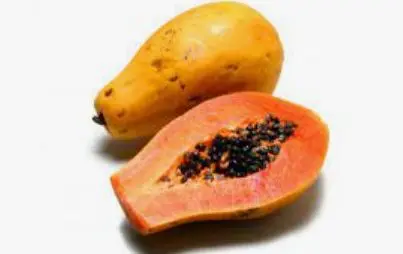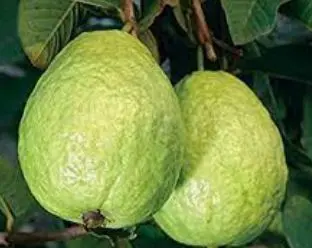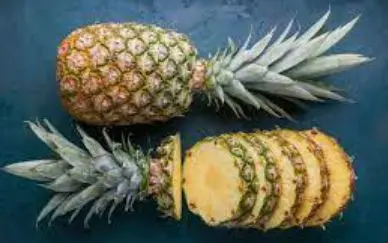Mexico known as the United Mexican States officially and Fruit of Mexico, is a country located in the southern part of North America. Mexico is a country known for its rich variety of fruits. and fruits from Mexico are known for their rich variety. Many of which have gained international recognition for their unique flavors and culinary uses.
Mexico is bordered by Belize and Guatemala to the south and the United States to the north. Mexico has coastlines along the Pacific Ocean to the west and the Gulf of Mexico and Caribbean Sea to the east.
Table of Contents
Key points about Mexico
Capital and Largest City
The capital of Mexico is Mexico City, which is also the largest city in the country.
Language
The official language of Mexico is Spanish. However, there are also numerous indigenous languages spoken by indigenous communities throughout the country.
Population
Mexico has a population of over 126 million people, making it the most populous Spanish-speaking country in the world and the third-most populous country in the Americas, after the United States and Brazil.
Government
Mexico is a federal presidential republic. It has a multi-party political system, and the President of Mexico serves as the head of state and government.
History
Mexico has a rich and complex history that dates back thousands of years. It was home to advanced civilizations such as the Olmec, Maya, and Aztec before the arrival of Spanish conquistadors led by Hernán Cortés in the 16th century. Mexico gained independence from Spain in 1821 and has since gone through periods of political and social change.
Culture
Mexican culture is diverse and influenced by a fusion of indigenous, Spanish, and other international cultures. It is renowned for its vibrant arts, literature, music, cuisine, and traditional celebrations such as Dia de los Muertos (Day of the Dead).
Economy
Mexico has one of the largest economies in the world. It is considered an emerging market and is known for its manufacturing sector, including the automotive, electronics, and aerospace industries. It is also a significant exporter of oil, silver, and other minerals.
Tourism
Mexico is a most popular tourist destination. It attracts millions of visitors each year. Its beautiful beaches, ancient ruins, colonial cities, and natural wonders like the Copper Canyon and cenotes make it a diverse and appealing travel spot.
Biodiversity
Mexico is incredibly biodiverse, boasting a wide range of ecosystems from deserts to rainforests. It is home to a vast array of plant and animal species, including the iconic Monarch butterflies that migrate to Mexico during the winter months.
UNESCO World Heritage Sites
Mexico has 35 UNESCO World Heritage Sites, including archaeological sites like Chichen Itza and Teotihuacan, historic cities like Guanajuato and Oaxaca, and natural wonders like Sian Ka’an Biosphere Reserve and El Pinacate and Gran Desierto de Altar Biosphere Reserve.
Else of it, The climate and diverse ecosystems in Mexico allow for the cultivation of a wide range of delicious fruits.
Famous Fruit of Mexico that are widely grown there:
Avocado

Avocado is a Famous and native Fruit of Mexico and has been cultivated there for thousands of years. The avocado tree, scientifically known as Persea americana, is a member of the Lauraceae family. The fruit is highly regarded for its rich, creamy texture and mild, buttery flavor.
In recent years, avocados have gained significant popularity globally, becoming a staple ingredient in many different cuisines worldwide.
Mexico is one of the world’s largest producers of avocados, and the fruit holds great cultural and culinary significance in the country. The state of Michoacán is particularly renowned for its avocado production and is often referred to as the “Avocado Capital of the World.”
Uses
In Mexican cuisine, avocados are used in a variety of dishes, most notably guacamole, a popular avocado-based dip. Avocados are also commonly sliced and used as a topping or ingredient in tacos, salads, and sandwiches. In recent years, avocados have gained significant popularity globally, becoming a staple ingredient in many different cuisines worldwide.
Avocado Variety and Patent
The Hass avocado, named after Rudolph Hass, a California postman who patented it in 1935, is the most commonly grown avocado variety in Mexico. It is known for its dark, pebbly skin, and creamy flesh. Other avocado varieties grown in Mexico include Fuerte, Bacon, and Reed, each with its own unique characteristics.
Mexico exports a large quantity of avocados to various countries, with the United States being one of the main importers. The demand for avocados has grown steadily over the years, thanks to their nutritional value and versatility in cooking.
Source of Nutrition
It’s worth mentioning that while avocados are highly nutritious and contain healthy fats, they are also relatively high in calories. Moderation is key when incorporating avocados into your diet, especially if you’re watching your calorie intake.
Mango

Mexico is also renowned for its mango production, and the country is one of the largest mango exporters in the world. Mangoes are native to South Asia, but they were introduced to Mexico during the Spanish colonization era in the 18th century. Since then, Mexico has become a major producer of various mango varieties, offering a wide range of flavors, colors, and sizes.
Varite
The Mexican mango season typically runs from March to September, with different varieties ripening at different times during this period. Some of the popular mango varieties grown in Mexico include Ataulfo (also known as Champagne or Honey mango), Tommy Atkins, Kent, Haden, and Manila.
The Ataulfo mango, named after its Mexican grower Ataulfo Morales Gordillo, is highly regarded for its sweet, creamy flesh and relatively small seed. It is one of the most sought-after mango varieties globally. The Ataulfo mangoes are harvested primarily in the Mexican states of Chiapas, Michoacán, Nayarit, and Sinaloa.
Uses
Mangoes are an essential part of Mexican cuisine and are used in both sweet and savory dishes. They are often enjoyed fresh, sliced, and eaten on their own or added to fruit salads. Mangoes are also used in salsas, chutneys, smoothies, ice creams, and various desserts. The tangy and sweet flavor of mangoes adds a delightful tropical touch to many Mexican dishes.
Source of Nutrition
In addition to their delicious taste, mangoes are a good source of vitamins A and C, dietary fiber, and antioxidants. They provide a host of health benefits, including supporting immune function, promoting healthy digestion, and aiding in skin health.
Production Area and Climate
Mexico’s ideal climate and fertile soil contribute to the cultivation of high-quality mangoes. The states of Sinaloa, Michoacán, Nayarit, and Jalisco are among the major mango-producing regions in Mexico.
Papaya

Papaya is another Famous Fruit of Mexico that is closely associated with Mexico. While papaya is native to the tropical regions of the Americas, it has been cultivated in Mexico for centuries and holds a significant place in Mexican cuisine and culture.
Sources of Nutrition
Papayas are large, melon-like fruits with a sweet, tropical flavor and vibrant orange or yellow flesh. They are rich in vitamins A and C, as well as dietary fiber and various antioxidants. The fruit is known for its digestive enzymes, particularly papain, which aids in digestion and can be beneficial for those with digestive issues.
Production Area and Climate
In Mexico, papayas are grown in several regions, including the states of Veracruz, Chiapas, and Yucatán. The Yucatán Peninsula, in particular, is known for its papaya production, and the region’s fertile soil and warm climate create ideal conditions for the fruit to thrive.
Uses
Papayas are consumed in various ways in Mexican cuisine. It should be eaten fresh, either on their own or added to fruit salads. Papaya is also a common ingredient in smoothies, juices, and aguas frescas, which are refreshing fruit-based beverages. Additionally, it is used in savory dishes, such as salsas and ceviche, to add a hint of sweetness and tang.
The versatility of papaya extends beyond its flesh. In Mexican culinary traditions, the seeds and leaves of the papaya tree are also used. Papaya seeds are sometimes dried, ground, and used as a spice or seasoning in certain dishes. The leaves, on the other hand, are used to wrap and cook food, similar to banana leaves.
Sources of Nutrition
In addition to its culinary uses, papaya is also valued for its potential health benefits. It is often consumed for its digestive properties and is believed to have anti-inflammatory and antioxidant effects.
Purchasing Tips
When selecting ripe papaya, look for fruits that are slightly soft to the touch and have a sweet aroma. Papayas can be stored at room temperature until ripe and then refrigerated for a few days to prolong their freshness.
Guava

Guava is another fruit that has a strong association with Mexico. It is believed to have originated in Central America and Mexico, and the country continues to be a major producer of guavas today.
Guavas are round or oval fruits with green or yellowish skin, depending on the variety and level of ripeness. The flesh of guavas is typically creamy white or pink, with small seeds at the center. They have a unique flavor that is sweet and tangy, often described as a combination of tropical and citrus notes.
Production Area and Climate
In Mexico, guavas are grown in various regions, including the states of Michoacán, Nayarit, Veracruz, and Jalisco. These regions offer warm climates and fertile soils that guava trees thrive in.
Uses
Guavas are enjoyed in multiple ways in Mexican cuisine. They can be eaten fresh, either sliced and eaten as is, or added to fruit salads.
Guavas are also used in the preparation of beverages, such as juices, smoothies, and aguas frescas (fruit-based drinks). Guava paste, a concentrated form of guava pulp, is popularly used in desserts, pastries, and as a filling for sweet treats like empanadas.
The versatility of guavas extends beyond their fruit. Guava leaves are sometimes used in Mexican traditional medicine. Believed to have medicinal properties, Particularly for their anti-inflammatory and antiseptic effects. Guava leaves are also used to make herbal teas and infusions.
Sources of Nutrition
In addition to their delicious taste, guavas are packed with vitamins A and C, dietary fiber, and antioxidants. They are known for their potential health benefits, including boosting the immune system, aiding digestion, and promoting healthy skin.
Purchasing Tips
When Purchasing and selecting guavas, look for fruits that are slightly soft to the touch, free from blemishes, and fragrant. Guavas can continue to ripen at room temperature and should be consumed when they reach the desired level of ripeness.
Pineapple

Pineapple is not native Fruit to Mexico, it is widely grown and cultivated in the country. Pineapples originated in South America, particularly in the region encompassing present-day Brazil and Paraguay. They were later introduced to Mexico and other parts of the world through exploration and trade.
Production Areas and Climate
In Mexico, pineapples are cultivated in several states, including Veracruz, Tabasco, Nayarit, and Colima. These regions provide the warm climate and fertile soil that pineapples require to thrive.
Texture
Pineapples have a distinctive appearance, with a rough, spiky outer skin that is typically golden or yellow in color. Inside, the fruit has juicy, yellow flesh that is sweet and tangy, with a hint of acidity.
Uses
In Mexican cuisine, pineapples are used in various ways. They are often enjoyed fresh, either sliced and eaten as is or added to fruit salads.
Pineapple is a popular ingredient in refreshing beverages, including juices, smoothies, and tropical cocktails. It is also used in savory dishes such as salsas, marinades for meats, and as a topping for tacos and grilled seafood.
Sources of Nutrition
Pineapples are not only delicious but also offer several nutritional benefits. Because they are a good source of vitamin C, manganese, and dietary fiber. Pineapples also contain an enzyme called bromelain, which has been associated with various health benefits, including aiding digestion and reducing inflammation.
Purchasing Tips
When selecting a pineapple, look for fruits that have a firm texture, vibrant color, and a sweet aroma at the base. The leaves at the crown should be green and healthy-looking.
However pineapples are available in Mexico year-round, they are particularly abundant during the summer months. Pineapples can be ripened further at room temperature and should be consumed when they reach the desired level of sweetness.
Pitaya

Texture
Pitaya, also commonly known as Dragon Fruit, is a unique fruit that is grown and enjoyed in Mexico. While pitaya is native to Central America, it has become a popular crop in Mexico due to its favorable growing conditions.
Pitaya has a vibrant appearance, with striking outer skin that can be either pink or yellow, depending on the variety. The flesh of the fruit is typically white or magenta, studded with small black seeds. The texture of the flesh is often compared to that of a kiwi, being juicy and subtly sweet.
Production Area and Climate
In Mexico, pitaya is cultivated in various regions, including the states of Nayarit, Sinaloa, and Sonora. These areas offer a warm climate and well-drained soils that are favorable for pitaya cultivation.
Uses
Pitaya is enjoyed in multiple ways in Mexican cuisine. It should be consumed fresh. Its flesh is scooped out and eaten on its own or added to fruit salads.
Pitaya is also used in smoothies, juices, and various desserts, such as ice creams and sorbets. The vibrant color and unique texture of pitaya make it an appealing ingredient for visually stunning dishes and beverages.
Sources of Nutrition
Pitaya is known for its nutritional benefits because It is rich in vitamin C, antioxidants, and dietary fiber. Pitaya is also low in calories, making it a popular choice for those seeking a healthy and refreshing fruit option.
Purchasing Tips
When selecting a pitaya, look for fruits that have bright, evenly colored skin without any blemishes or signs of mold. The skin should yield slightly to gentle pressure, indicating ripeness. It’s best to store pitayas in the refrigerator and consume them within a few days of purchase for optimal freshness.
Tamarind

Tamarind is a fruit that is closely associated with Mexico and has been cultivated there for centuries. Its trees are native to tropical Africa but were introduced to Mexico and other parts of the world through trade and colonization.
Texture
The tamarind fruit is pod-like and contains a sticky, tangy pulp. When fully ripe, the pulp is brown and sweet-sour in taste, often described as having a combination of sweet and tart flavors. Tamarind is known for its distinctive flavor profile, which adds a tangy and slightly acidic element to dishes.
Uses
In Mexico, tamarind is commonly used in culinary preparations. The pulp is extracted from the fruit pods and used as a key ingredient in various Mexican dishes, drinks, and candies.
Tamarind is often used to make refreshing beverages like agua fresca, which is a fruit-based drink, as well as traditional candies and sauces. Tamarind-based sauces and marinades are popularly used in Mexican cuisine, adding a unique tangy flavor to dishes.
Sources of Nutrition
Tamarind is also valued for its medicinal properties. It is believed to have digestive benefits and is often used in traditional remedies for stomach ailments. Tamarind is rich in vitamins, minerals, and antioxidants, providing potential health benefits such as aiding digestion, supporting heart health, and promoting a healthy immune system.
Production Areas and Climate
Mexico’s warm climate and fertile soils provide suitable conditions for tamarind tree cultivation. The states of Colima, Veracruz, and Guerrero are known for their tamarind production.
Purchasing Tips
When selecting tamarind, you can find it in various forms, such as fresh pods, pulp, or paste. Fresh pods should be plump and have a slightly brittle shell.
Its pulp or paste is often available in packaged form and should have a deep brown color. Tamarind paste is convenient to use and can be stored for a longer period.
Zapote

Zapote is a fruit that is native to Mexico and is enjoyed for its unique flavor and texture. There are several varieties of zapote, each with its own characteristics and culinary uses.
Texture and Variety
Mamey Zapote Or Pouteria Sapota
One common variety of zapote found in Mexico is the mamey zapote (Pouteria sapota). It is a large fruit with rough, brownish skin and sweet, orange flesh.
Mamey zapote has a creamy texture and a flavor that is often described as a combination of sweet potato, pumpkin, and apricot. It is often eaten fresh, sliced, and enjoyed on its own or added to smoothies, ice creams, and desserts.
Black Zapote Or Diospyros Texana
Another popular variety is the black zapote (Diospyros texana). It is a small, round fruit with smooth black skin and soft, custard-like flesh. Black zapote has a mild, sweet taste and is often used in milkshakes, desserts, and as a topping for yogurts and cereals.
Zapote Negro Or Casimiroa edulis
Zapote negro (Casimiroa Edulis) is another variety of zapote found in Mexico. It is a greenish-yellow fruit with thin, smooth skin and sweet, custard-like flesh. Zapote negro has a tropical flavor similar to that of creamy pear and is commonly eaten fresh or used in milkshakes and desserts.
Zapote fruits are typically harvested when fully ripe and soft. Its pulp flesh is scooped out and eaten, while the skin and seeds are discarded.
Sources of Nutrition
In addition to their delicious taste, zapote fruits offer various nutritional benefits. They are a good source of dietary fiber, vitamins, and minerals, depending on the specific variety.
Zapote fruits are also believed to have certain medicinal properties and are used in traditional Mexican herbal remedies for digestive issues and as a natural energizer.
Production Areas and Climate
Zapote trees are grown in various regions of Mexico, including the states of Veracruz, Chiapas, and Oaxaca, among others. The warm climate and fertile soil in these regions contribute to the successful cultivation of zapote fruits.
Guanabana (Soursop)

Guanabana, also known as soursop, is a tropical fruit from Mexico that is widely grown and enjoyed in Mexico. It has a unique flavor and a creamy, custard-like texture that sets it apart from other fruits.
Texture
Guanabana has green, spiky skin and can grow to be quite large, sometimes reaching up to 12 inches (30 cm) in length. The inside of the fruit is white and fleshy, with a sweet and tangy flavor reminiscent of a combination of pineapple and strawberry. Its pulp flesh is often consumed fresh or used in beverages, ice creams, smoothies, and desserts.
Uses
Guanabana is a beloved fruit in Mexican cuisine, and its distinct flavor and texture make it a popular choice for both sweet and savory dishes. Its tropical taste adds a refreshing touch to various culinary creations and beverages enjoyed in Mexico.
Production Areas Or Climate
In Mexico, guanabana is a popular fruit, and it is cultivated in various regions with favorable tropical climates, such as Chiapas, Veracruz, and Yucatán. The fruit thrives in warm, humid conditions and is well-suited to the Mexican climate.
Sources of Nutrition
Guanabana is not only delicious but also offers several potential health benefits. It is a good source of vitamin C, fiber, and antioxidants. The fruit is known for its reputed medicinal properties and is used in traditional remedies for various ailments.
Purchasing Tips
When selecting a guanabana, look for fruits that are firm, yet slightly yielding when gently pressed. The skin should be free of blemishes and have a strong, sweet aroma. Guanabanas can be stored at room temperature until they are ripe, after which they can be refrigerated for a few days to maintain freshness.
Conclusion
These are just a few examples of Mexican fruits or fruit from Mexico that can be found in Mexico. The country’s tropical and subtropical climate also allows for the cultivation of many other fruits, making Mexico a fruit lover’s paradise.
However, it is important to note that the scientific evidence supporting these claims is limited, and it is advisable to consult a healthcare professional for specific health concerns. We have obtained this information (fruits from Mexico) through the Internet and made it available to you.
Read Also –
STARBUCKS COFFEE PRICE SO HIGH




Very nice 👌 post